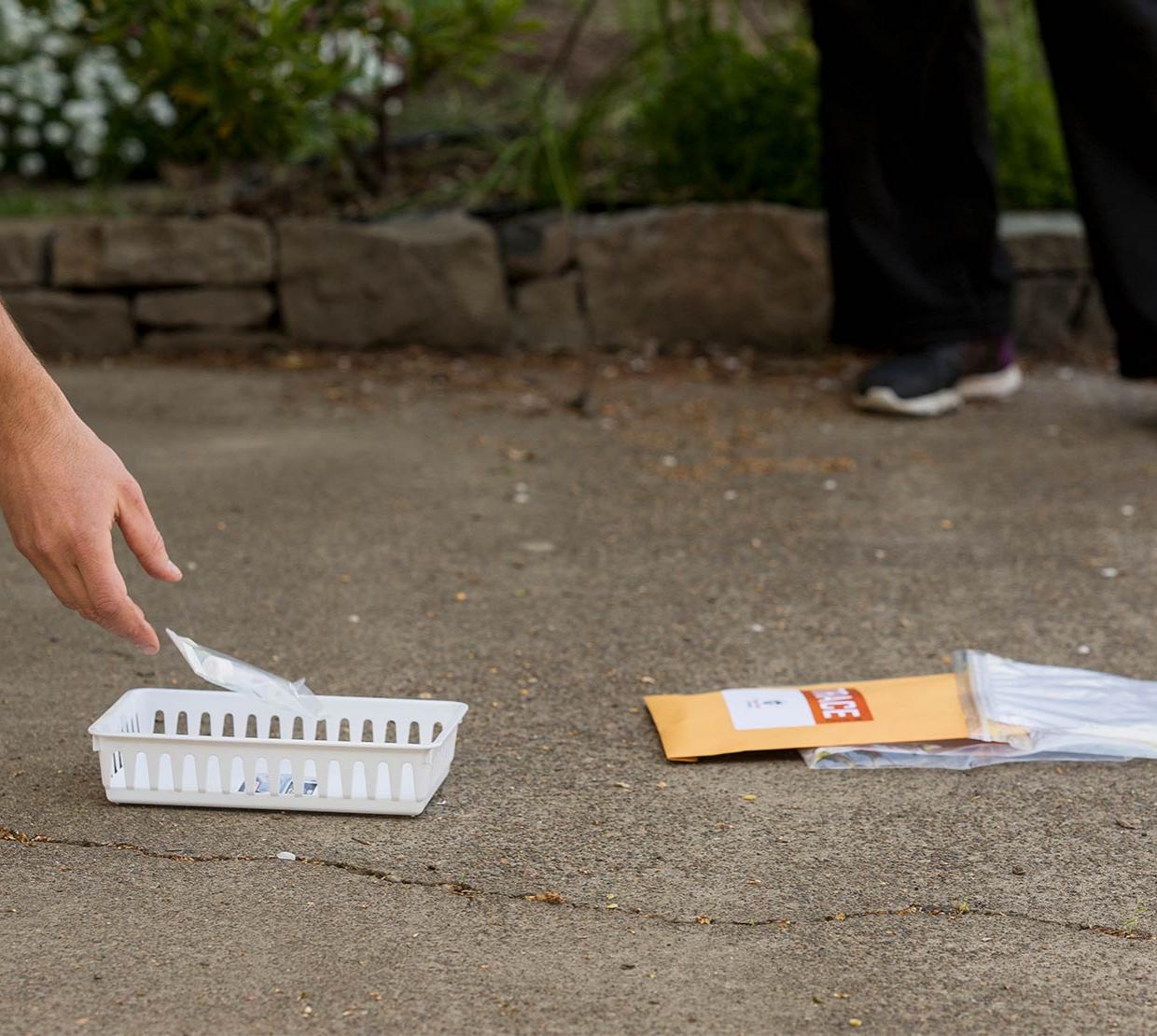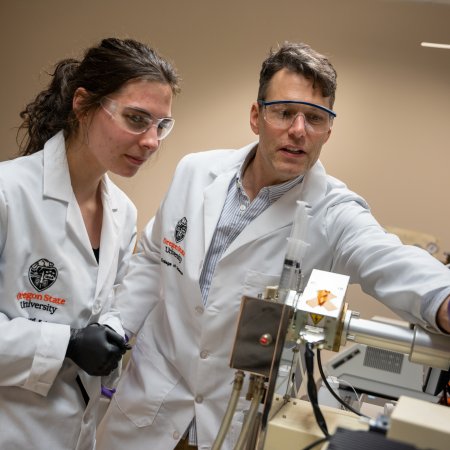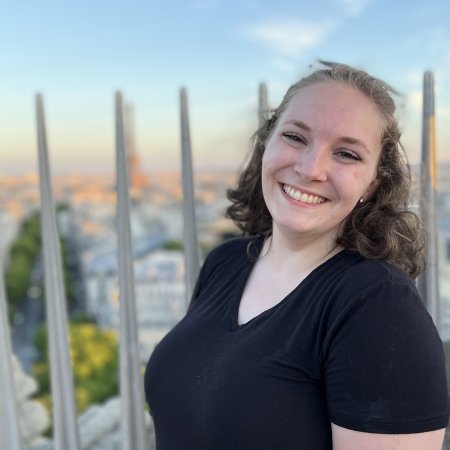Oregon State University’s groundbreaking project to determine community prevalence of the novel coronavirus is expanding to include three days of TRACE Community sampling this week in Redmond on Jan. 29, 30 and 31.
“We are excited to partner with the city of Redmond and with Deschutes County to measure the prevalence of the virus that causes COVID-19,” said TRACE-COVID-19 project leader Ben Dalziel, an assistant professor in the Department of Integrative Biology. “We worked with the city of Bend last May and gathered prevalence data to support public health decision making in Deschutes County, and we are glad to return to Central Oregon to gather current information about community prevalence."
Redmond has a population of just over 30,000, roughly one-seventh of Deschutes County’s population of 203,000. The county has reported 39 COVID-19 fatalities and 5,137 cases – including 2,249 people who have recovered. There are 2,849 active cases in the county – one per every 69 residents.
Over the three days of Redmond sampling, 30 two- or three-person field teams from TRACE – short for Team-based Rapid Assessment of Community-Level Coronavirus Epidemics – will visit 30 city neighborhoods and invite as many as 600 residents to take place in nasal swab testing for SARS-CoV-2, the virus that causes COVID-19. Students and faculty from OSU-Cascades in Bend and local health care professionals will assist with the sampling as they did last spring in Bend.
Also, public works staff from the city of Redmond will gather multiple sewage samples which Oregon State researchers will analyze for genetic material from SARS-CoV-2. The virus has not been shown to survive as a pathogenic agent in wastewater, but infected people pass detectable genetic components of the virus into the sewer system, thereby providing a complementary indication of how extensive COVID-19 is in a community.
OSU researchers have been testing Redmond wastewater multiple times per week since Dec. 7, 2020. Recent results indicate that the signal has remained consistently strong over the past two months.
“This combined approach of increased testing of asymptomatic individuals and wastewater surveillance for COVID-19 continues to provide very helpful insights for our local management of this epidemic,” said Dr. George A. Conway, Deschutes County health director.
Since the project began in April 2020, OSU has performed TRACE Community sampling in Corvallis five times, in Newport twice, and in Bend, Hermiston and Eugene once each. TRACE and an affiliated project in OSU’s College of Engineering are analyzing wastewater for indications of the virus in those communities as well as many as 40 cities statewide.
“We are excited to participate in Oregon State University’s TRACE Community project, to gain a better understanding of COVID-19 prevalence in Redmond and how it impacts on our residents,” said Redmond Mayor George Endicott. “As an OSU alumnus, I am proud to see the innovative work being done here in my hometown. At a time when localized information is critical and hard to come by, the data from the university’s efforts will provide one more layer of detail on how prevalent COVID is in Redmond. The results will be one more variable for us as we seek to balance the economy with health in our advocacy to the state officials.”
Going door-to-door, TRACE Community field workers will invite members of each household they visit to participate in the project. Those who choose to take part will be asked to provide information such as their name and date of birth; fill out a simple consent form; and answer a few confidential, health-related questions.
Participants will be given a nasal-swab test kit that they administer to themselves inside their home and to their minor children if they want them to take part. The field staff will wait outside, and the participants will leave the completed test kits outside their front door.
The field workers will leave participants with information about the project and how they will receive their results – available in five to 10 days – as well as health guidance from Deschutes County Public Health and the Centers for Disease Control and Prevention. Participants in the effort will receive their results and those of their minor children by secure email with receipt by mail as a backup. Personal information will be safeguarded.
TRACE co-leader Jeff Bethel, an associate professor in OSU’s College of Public Health and Human Sciences, said understanding the estimated prevalence of COVID-19 in Redmond comes at an important time.
“Even though the region is a hub for outdoor recreation year-round, when it’s cold outside people tend to spend a lot more time indoors,” Bethel said. “That necessitates being extra cautious and vigilant in observing our own health symptoms and following public health guidelines, such as engaging in social distancing, frequently washing our hands, wearing face coverings and limiting attendance at social get-togethers.”
The TRACE-COVID-19 project began as a collaboration of five OSU colleges – Science, Agricultural Sciences, the Carlson College of Veterinary Medicine, Engineering, and Public Health and Human Sciences – plus the OSU Center for Genome Research and Biocomputing. The project has worked in partnership with the county health departments around the state.
The diagnostic testing component of TRACE operates through a partnership between the Oregon Veterinary Diagnostic Laboratory, which is located at OSU, and Willamette Valley Toxicology.
TRACE-COVID-19 has received funding from OSU, the David and Lucile Packard Foundation, PacificSource Health Plans and the Oregon Health Authority and has been aided by work from the OSU Foundation and the OSU Alumni Association.
For more information about TRACE, visit the TRACE-COVID-19 website. The site includes a list of frequently asked questions.




